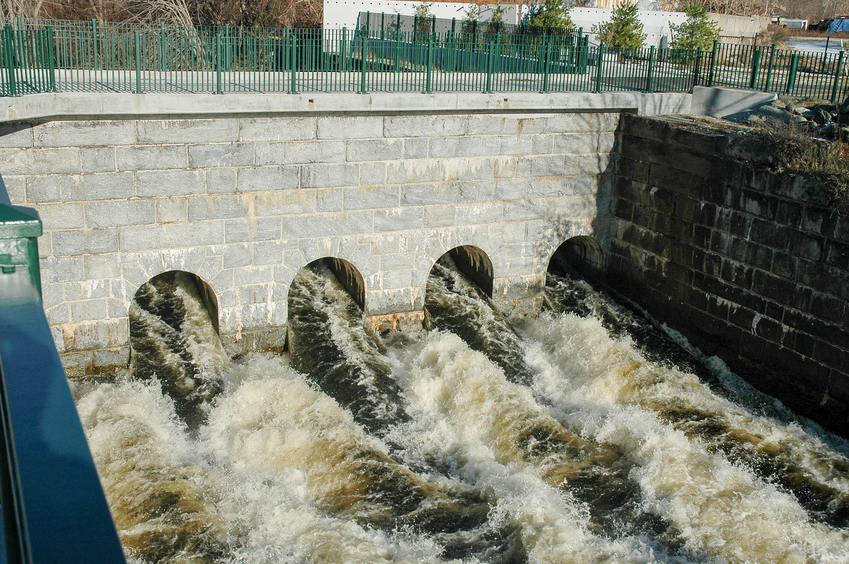British Columbia Structural 19 PDH Discount Package 2
Courses in this Package
Conduits, Culverts and Pipes - Design and Installation (S04-001)
Installing Seismic Restraints for Electrical Equipment (S05-009)
Installing Seismic Restraints for Mechanical Equipment (S05-008)
Tunnel Operations, Maintenance, Inspection, and Evaluation Manual: Evaluation (C02-073)
Tunnel Operations, Maintenance, Inspection, and Evaluation Manual: Maintenance (C02-074)
General Principals of Engineering Ethics for British Columbia Professional Engineers (BC1-001)

This online engineering PDH course provides guidance on the design and construction of conduits, culverts, and pipes, as well as design procedures for trench/embankment earth loadings, highway loadings, railroad loadings, surface concentrated loadings, and internal/external fluid pressures.
In general, reinforced concrete conduits, culverts and pipes are used for dams, urban levees, and other levees where public safety is at risk or substantial property damage could occur. Corrugated metal pipes are acceptable through agricultural levees where conduits are 900-mm (36-in.) diameter and where levee embankments are not higher than 4 m (12 ft) above the conduit invert. Inlet structures, intake towers, gate wells, and outlet structures are usually concrete. However, corrugated metal structures may be used in agricultural and rural levees.
This 4 PDH online course is applicable to civil, structural and geotechnical engineers, as well as design and construction personnel involved with the design and installation of conduits, culverts and pipes.
This P.Eng. continuing education course is intended to provide you with the following specific knowledge and skills:
- Design and installation of cast-in-place conduits for dams
- Design and installation of circular reinforced concrete pipe for small dams and levees
- Design and installation of corrugated metal pipe for rural levees and culverts
- Design and installation of concrete culverts
- Design and installation of plastic pipe for other applications
- Design and installation of ductile iron and steel pipe for other applications
- Design and construction guidelines for pipe jacking
In this professional engineering CEU course, you need to review the US Corps of Engineers Publication EM 1110-2-2902, "Conduits, Culverts and Pipes".
Upon successful completion of the quiz, print your Certificate of Completion instantly. (Note: if you are paying by check or money order, you will be able to print it after we receive your payment.) For your convenience, we will also email it to you. Please note that you can log in to your account at any time to access and print your Certificate of Completion.

This online engineering PDH course provides guidelines on how to attach Electrical equipment to a building to minimize earthquake damage. It presents examples of anchoring and using special devices called seismic restraint devices. These devices include vibration isolation systems, cable or strut suspension systems, roof attachment systems and steel shapes.
This 5 PDH online course is applicable to structural and electrical engineers, architects, contractors, building professionals, and other technical personnel dealing with the planning, design and installation of electrical equipment.
This P.Eng. continuing education course is intended to provide you with the following specific knowledge and skills:
- Identifying electrical equipment and selecting the appropriate method for its installation
- Familiarizing with the different types of attachments
- Familiarizing with the various types of anchors
- Learning the different methods of supporting control panels and attaching lighting fixtures
- Learning how to design housekeeping pads for seismic measures
In this professional engineering CEU course, you need to review the publication "Installing Seismic Restraints for Electrical Equipment" (FEMA 413), published by the Federal Emergency Management Agency.
Upon successful completion of the quiz, print your Certificate of Completion instantly. (Note: if you are paying by check or money order, you will be able to print it after we receive your payment.) For your convenience, we will also email it to you. Please note that you can log in to your account at any time to access and print your Certificate of Completion.

This online engineering PDH course provides guidelines on how to attach mechanical equipment to a building to minimize earthquake damage. It presents examples of anchoring and using special devices called seismic restraint devices. These devices include vibration isolation systems, cable or strut suspension systems, roof attachment systems and steel shapes.
This 5 PDH online course is applicable to structural and mechanical engineers, architects, contractors, building professionals, and other technical personnel dealing with the planning, design and installation of mechanical equipment.
This P.Eng. continuing education course is intended to provide you with the following specific knowledge and skills:
- Identifying mechanical equipment and selecting the appropriate method for its installation
- Familiarizing with the different types of attachments
- Familiarizing with the various types of anchors
- Understanding the different methods of supporting control panels
- Understanding the various methods of attaching HVAC equipment to residential structures
- Learning how to design housekeeping pads for seismic measures
In thisprofessional engineering CEU course, you need to review the publication "Installing Seismic Restraints for Mechanical Equipment" (FEMA 412), published by the Federal Emergency Management Agency.
Upon successful completion of the quiz, print your Certificate of Completion instantly. (Note: if you are paying by check or money order, you will be able to print it after we receive your payment.) For your convenience, we will also email it to you. Please note that you can log in to your account at any time to access and print your Certificate of Completion.

This engineering online PDH course will provide an overview on the evaluation of tunnel systems and the associated components. The components explored in this chapter include the typical personnel involved, supplemental inspection and testing methods, risk-based assessments, priority classification, and basic cost estimating. Information is also provided on load rating.
Evaluations are normally performed after the inspection data is received. Sound engineering judgment is used to evaluate the consequences of tunnel system or component failure in terms of overall safety, service level, and costs. In some instances, supplementary inspections and testing may be needed where data is lacking. Risk assessment techniques should include strategies for deploying, operating, maintaining, upgrading, and disposing of tunnel system components in a cost-effective manner.
This 2 PDH online course is applicable to civil and structural engineers, as well as design and construction personnel involved with the evaluation process of tunnel systems.
This P.Eng. continuing education course is intended to provide you with the following specific knowledge and skills:
- Understanding the evaluation criteria and methods of tunnel systems
- Identifying the typical personnel involved in tunnel evaluation procedures
- Familiarization with different testing methods
- Understanding risk-based assessments
- Recognizing priority classification
- Understanding the basics of cost estimating
Upon successful completion of the quiz, print your Certificate of Completion instantly. (Note: if you are paying by check or money order, you will be able to print it after we receive your payment.) For your convenience, we will also email it to you. Please note that you can log in to your account at any time to access and print your Certificate of Completion.

This engineering online PDH course will provide an overview on effective maintenance considerations of tunnel systems and the associated components.
An effective maintenance program helps reduce costs, decrease the number of tunnel closures, increase public safety, and ensure adequate levels of service. To maximize efficient use of resources and minimize costs, maintenance programs should be optimized. When large-scale repairs and upgrades are implemented, these projects are typically referred to as tunnel rehabilitation.
This 2 PDH online course is applicable to civil and structural engineers, as well as design and construction personnel involved with the maintenance process of tunnel systems.
This P.Eng. continuing education course is intended to provide you with the following specific knowledge and skills:
- Understanding the fundamental causes of deterioration and corrosion in tunnels.
- Familiarization with the methods aimed at controlling groundwater seepage.
- Familiarization with the repair techniques and rehabilitation schemes.
Upon successful completion of the quiz, print your Certificate of Completion instantly. (Note: if you are paying by check or money order, you will be able to print it after we receive your payment.) For your convenience, we will also email it to you. Please note that you can log in to your account at any time to access and print your Certificate of Completion.

This online engineering PDH ethics course is (1) the study of moral issues and decisions confronting individuals and organizations involved in engineering and (2) the study of related questions about moral conduct, character, ideals and relationships of peoples and organizations involved in technological development (Martin and Schinzinger, Ethics in Engineering).
This course will address the principles of engineering ethics that every engineer is expected to live by when practicing their profession. It will also present unique ethical case studies randomly selected to demonstrate ethical challenges for professional engineers and alternatives to address these challenges.
This 1 PDH online course is applicable to Professional Engineers licensed in the Province of British Columbia and who are required to demonstrate continuing professional competency in engineering ethics as a condition of their license renewal. For each renewal period, every licensee must complete at least one (1) professional development hour relative to the principals of professional responsibility, conduct and ethics.
This P.Eng. continuing education course is intended to provide you with the following specific knowledge and skills:
- Understanding the definition of engineering ethics
- Learning how to hold the utmost safety, health, and welfare of the public when practicing your profession
- Familiarizing with the conditions to issue public statements
- Gaining a general overview on how to represent each employer or client as a faithful trustee
- Learning how to build your professional reputation on the merit of your services
- Understanding professional ethical practices through presenting realistic case studies
- Learning how to handle proprietary information and intellectual property rights
Upon successful completion of the quiz, print your Certificate of Completion instantly. (Note: if you are paying by check or money order, you will be able to print it after we receive your payment.) For your convenience, we will also email it to you. Please note that you can log in to your account at any time to access and print your Certificate of Completion.